A big thanks to everyone who voted for Elixir Bound in the You Gotta Read June cover contest…it took second place (and earned two months of free advertising)! While I’m off celebrating, please welcome Jo Marshall, author of the gorgeous Twig Stories and fellow puzzle enthusiast, as she shares some great tips on research.
 Thanks, Katie, for inviting me to talk about research strategies and tips. It’s a kick to be on your blog, especially since we have something in common besides writing books for kids. You once edited a puzzle magazine. Working puzzles happens to be my passion! Finding the right puzzle piece is like doing research to find that perfect fact, which fits a scene in your book. Once you do, your puzzle fits together brilliantly! With that in mind, here’s a few of my researching tips.
Thanks, Katie, for inviting me to talk about research strategies and tips. It’s a kick to be on your blog, especially since we have something in common besides writing books for kids. You once edited a puzzle magazine. Working puzzles happens to be my passion! Finding the right puzzle piece is like doing research to find that perfect fact, which fits a scene in your book. Once you do, your puzzle fits together brilliantly! With that in mind, here’s a few of my researching tips.
First, if I might describe the puzzle box for my stories. I write eco-literary, fantasy novels called Twig Stories for young readers, ages 8 to 12. Twigs are impish, amusing, stick creatures, and live in a land of jagged, volcanic peaks, serene glacial lakes, moss-draped rainforests, and windswept prairies similar to where I live in Snohomish, Washington in the Pacific Northwest. Devastating climate change events are impacting this region.
First tip ~ Assemble the frame of your puzzle first.
Although Twigs are pure fantasy, climate change is real. Due to an overabundance of information, I continually research climate shift in the Pacific Northwest. I decide which pieces of the climate crisis puzzle will sweep young readers into the thrilling, fantastic world of Twigs, and at the same time increase their concern for nature. Only those pieces which make Twig Stories entertaining, yet are actual ecological facts form the frame. Endangered animals like the spirit bear, horned lark, and salamanders fit the criteria easily, and of course, scary climatic events like glacial outburst floods and dying forests caused by bark beetles fit, too.
Second tip ~ Sort the pieces of your story into topics or groups.
After I have a frame, I group my pieces. You might choose those parts of your story you need to understand better. For each of my four books, I chose four specific climate change impacts to research – glacial floods, dying forests, shrinking glaciers, and species adaptation. These choices immediately gave the stories focus, determined the action, offered clarity to the theme, and created resolution to the conflict. Other groups might be characters or places.
Third tip ~ Figure out where your pieces fit.
To find where your pieces go, you need to collect descriptive facts for your groups. Adequate descriptions that embrace the splendor of the Twigs forest home with all its exquisite complexity require research. For your character group you may need to know what they wear, how they shelter, where they travel, for example. Placing facts in your story immediately inspires your characterizations and plot. Nothing motivates my Twigs to reach beyond their limits more than discovering the tremendous diversity in nature. I constantly rewrite the descriptions and action (usually for the better!) to match fact. If I’m ever stumped, or wonder, “What happens next?” I often find the answer on an internet fact search. Through description, you discover where pieces fit into the story, and so the puzzle starts to come together.
Fourth tip ~ Use all your resources!
Like using 5 lamps on your puzzle table to see better, you can use every resource at your fingertips! The internet is fantastic for global fact-finding. But there are other ways to research, too. Libraries, authors, television documentaries, radio shows – whatever you can find to uncover facts for your story will work. Occasionally you grip that puzzle piece that won’t fit anywhere. It just doesn’t make sense, but it’s essential to the action. Ask the experts! I sent emails to professors and nonprofit officers asking for help. Most were amazingly generous with their guidance. All of my manuscripts were reviewed by different conservation experts in the fields of wildlife, forestry, geology, glaciology, biology, and climate change. Without their helpful suggestions, Twigs would not have such excellent adventures!
Placing the last piece in the puzzle is always a thrill. Once all the pieces, or facts, are in place, your readers will love your story and also know a little more about your world and theirs, and that is a very satisfying feeling.
Thanks again, Katie, for sharing Twig Stories with your fans and followers. I hope my puzzle perspective encourages writers of all genres to research and infuse their stories with facts. I’m sure their readers will love it!
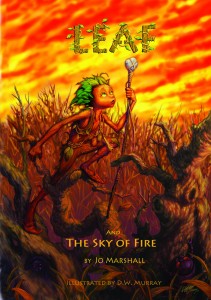 Leaf & the Sky of Fire blurb:
Leaf & the Sky of Fire blurb:
Twigs live in a fragile world of old forests and magnificent glaciers threatened by climate change, yet Twigs stick together to survive! In a dying forest – infested with bark beetles – small, stick creatures called Twigs are forced to hide in a cave, or be devoured by the ravenous barkbiters! A young Twig named Leaf attempts a foolhardy rescue, but instead leads them all into even greater danger for now they are pursued by barkbiters and fire! Still, the Twigs have courageous companions. Three loyal salamanders and a fearless, misplaced chameleon guard the Twigs during their escape over a barren ridge. In their darkest moments, a spirit bear stalks them. And the barkbiters are relentless as they swarm after the Twigs. Soon the firestorm panics all the forest creatures! But there is one passage south, if only the Twigs discover it in time!
Royalties are shared with nonprofits concerned with wildlife protection, climate change research, nature conservancy, and forest preservation.
Twig Stories are beautifully illustrated by D.W. Murray, an award-winning Disney artist. His credits include Mulan, Tarzan, Lilo & Stitch, Brother Bear, and Curious George. He is a recipient of the New York Society of Illustrators Gallery and the 2004 Gold Aurora Award.
Twig Stories are available in kindle ebooks and paperbacks worldwide. Check out Leaf & the Rushing Waters, Leaf & the Sky of Fire, and Leaf & the Long Ice. Leaf & Echo Peak arrives early 2014!
 About the Author:
About the Author:
Jo volunteered as a literacy tutor for elementary school children for many years. In 1986, while living in West Berlin, she earned a B.A. in German Language and Literature from the University of Maryland, Europe. In Berlin, she worked as a liaison between the military and diplomatic communities. Jo lived in the D.C. area from 1999 to 2006, and worked in litigation for two nonprofit organizations as the legal assistant to the General Counsel. Jo enjoys mysteries, puzzles, board games, science, NPR, PBS, and Big Band era music. She is a member of the Society of Environmental Journalists, Read A Book Make A Difference, and many forest and wildlife conservation nonprofits. Jo lives with her family in Snohomish, Washington. For more about Jo visit her Amazon author page.
 Coming on the heels of discussing the real history and legends that inspired my middle grade adventure PIRATE ISLAND (see my post “The Real Pirate Lore That Inspired PIRATE ISLAND”) and while I’m currently deep in research mode for my next middle grade novel, I’ve been thinking a lot about how to weave real history into novels. And how to do this for children’s books in particular.
Coming on the heels of discussing the real history and legends that inspired my middle grade adventure PIRATE ISLAND (see my post “The Real Pirate Lore That Inspired PIRATE ISLAND”) and while I’m currently deep in research mode for my next middle grade novel, I’ve been thinking a lot about how to weave real history into novels. And how to do this for children’s books in particular.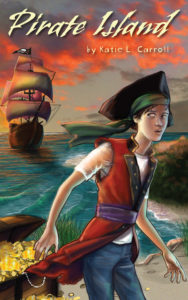 Beyond making the material age appropriate, I think it’s important to make the history relevant. Whether that means making it fun (which isn’t necessarily the case of the history I’ve included) or by making it personal. Captain Kidd’s history is personal to Billy, the main character of PIRATE ISLAND, because Billy becomes obsessed with Kidd and models Kidd’s behavior to be brave. The history of the hidden treasure drives the plot of the story, but Billy’s emotional connection to Kidd drives the emotional story line.
Beyond making the material age appropriate, I think it’s important to make the history relevant. Whether that means making it fun (which isn’t necessarily the case of the history I’ve included) or by making it personal. Captain Kidd’s history is personal to Billy, the main character of PIRATE ISLAND, because Billy becomes obsessed with Kidd and models Kidd’s behavior to be brave. The history of the hidden treasure drives the plot of the story, but Billy’s emotional connection to Kidd drives the emotional story line.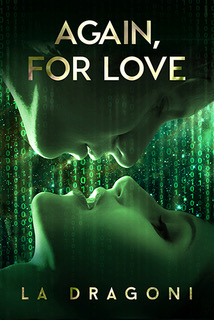
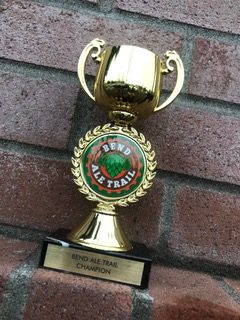 Luckily, here in Bend, Oregon, we have the largest ale trail in the west. My husband and I frequently host friends and family who come to Bend simply to experience the ale trail. I’ve tasted so much beer, I have a trophy! My favorite beer is a winter ale on nitro. I know I don’t like pilsners, I’m always willing to try a new red ale or a stout. It was so much fun being able to weave this knowledge into my story. I hope I’ve represented the craft brewing world well.
Luckily, here in Bend, Oregon, we have the largest ale trail in the west. My husband and I frequently host friends and family who come to Bend simply to experience the ale trail. I’ve tasted so much beer, I have a trophy! My favorite beer is a winter ale on nitro. I know I don’t like pilsners, I’m always willing to try a new red ale or a stout. It was so much fun being able to weave this knowledge into my story. I hope I’ve represented the craft brewing world well.
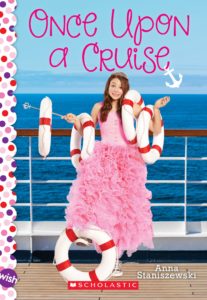


 Leaf & the Sky of Fire blurb:
Leaf & the Sky of Fire blurb:



















